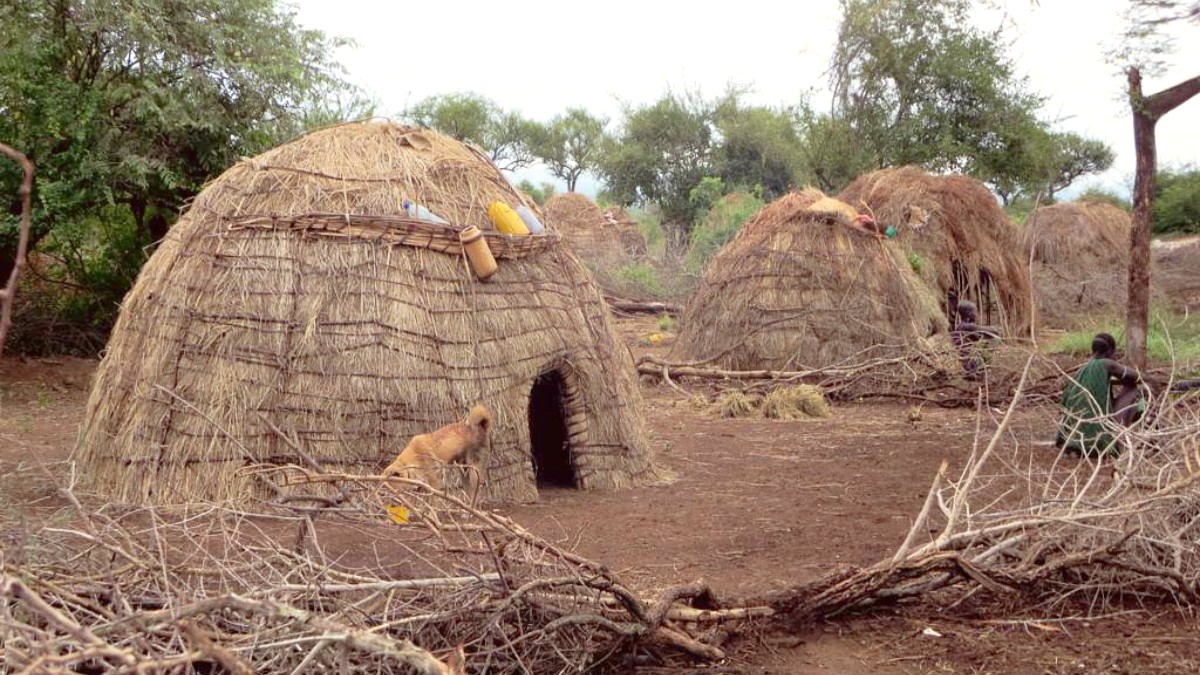
Ethiopia
Many tribal villages are visited as day trips from either Jinka or Turmi. Mursi Villages are typically a half-day or full-day trip from Jinka, often including a drive into Mago National Park. Hamer, Karo, and Dassenech Villages are often visited as day trips from Turmi or Omorate. A full day might include visiting one or two different tribal areas.
The Konso Cultural Landscape, an UNESCO World Heritage site, sits on the Omo Valley's edge, often reached from Arba Minch. It can be a long day trip from Arba Minch or a stop when traveling by road. It presents a distinct cultural and agricultural perspective.
The Omo Valley and its surroundings showcase natural beauty alongside its cultural richness.
Mago National Park, near Jinka, serves as a day trip destination. It combines Mursi village visits with some wildlife viewing. Nechisar National Park, near Arba Minch, is readily accessible and recognized for its diverse wildlife and the "Bridge of God" separating Lake Abaya and Lake Chamo. It is a common day trip from Arba Minch, including game drives and boat trips.
Driving through the Omo Valley presents ever-changing scenic landscapes, including dry plains, acacia woodlands, lush riverine forests, and distant escarpments. The journey itself offers chances for landscape photography and appreciating the region's vastness.
Cultural exploration forms the core of the Omo Valley experience.
The Konso Cultural Landscape is a historical treasure outside the immediate tribal areas of the Omo Valley, showing an unique, ancient, and highly organized agricultural society.
Visits to various tribal villages are central to the Omo Valley experience. Explore traditional huts, observe daily activities, and learn about livelihoods, which often include pastoralism and small-scale agriculture.
There are no specific pilgrimage sites for tourists in the Omo Valley. The spiritual life of the tribes integrates into their daily practices and ceremonies.
An organized tour is highly advisable and practically a necessity for exploring the Omo Valley. A reputable tour operator manages all aspects, including 4x4 transport, an experienced driver, a knowledgeable local guide, and necessary local permissions and fees. This option promotes safety, efficiency, and cultural understanding.
Attempting to travel independently in the Omo Valley is not advisable for a typical tourist. It is very difficult, potentially unsafe, and logistically complex. Public transport is limited, roads are rough, and language barriers across different tribal languages are present. Local village permits and guides are mandatory.
Many travelers combine an Omo Valley journey with visits to other parts of Ethiopia.
Adding 1-2 days for Arba Minch permits exploration of Lakes Abaya and Chamo with a boat trip to spot hippos and crocodiles. It also permits a visit to Nechisar National Park for wildlife viewing. This stop offers a relaxing interlude before or after the Omo Valley portion of your trip.
Addis Ababa serves as your gateway for international flights. Consider an extra day or two there to explore the capital's museums, markets, and cultural sites. Lalibela, an UNESCO World Heritage Site with rock-hewn churches, is a necessary stop for history and religious architecture enthusiasts.
From Jinka or Arba Minch, domestic flights will take you back to Addis Ababa. From Addis Ababa, you can then connect to flights for Lalibela, Axum, Gondar, or Bahir Dar (for Simien Mountains). Road travel is common between Arba Minch, Konso, and the Omo Valley, allowing you to experience the changing landscapes.
The "Northern Historic Route" typically connects Addis Ababa, Bahir Dar (for Lake Tana monasteries), Gondar (castles), Axum (ancient city), and Lalibela (rock-hewn churches) via domestic flights. This route provides a deep dive into Ethiopia's historical and religious heritage. The "Southern Route" covers Addis Ababa, Arba Minch, Konso, and the Omo Valley, forming the main Omo Valley itinerary.
Enhance your multi-day extensions with various activities and excursions.
Boat trips on Lake Chamo, wildlife spotting in Nechisar National Park, and exploring local markets.
Visit terraced villages, learn about their unique agricultural practices and social structures.
Discover ancient churches, castles, and monasteries. Engage with rich historical narratives.